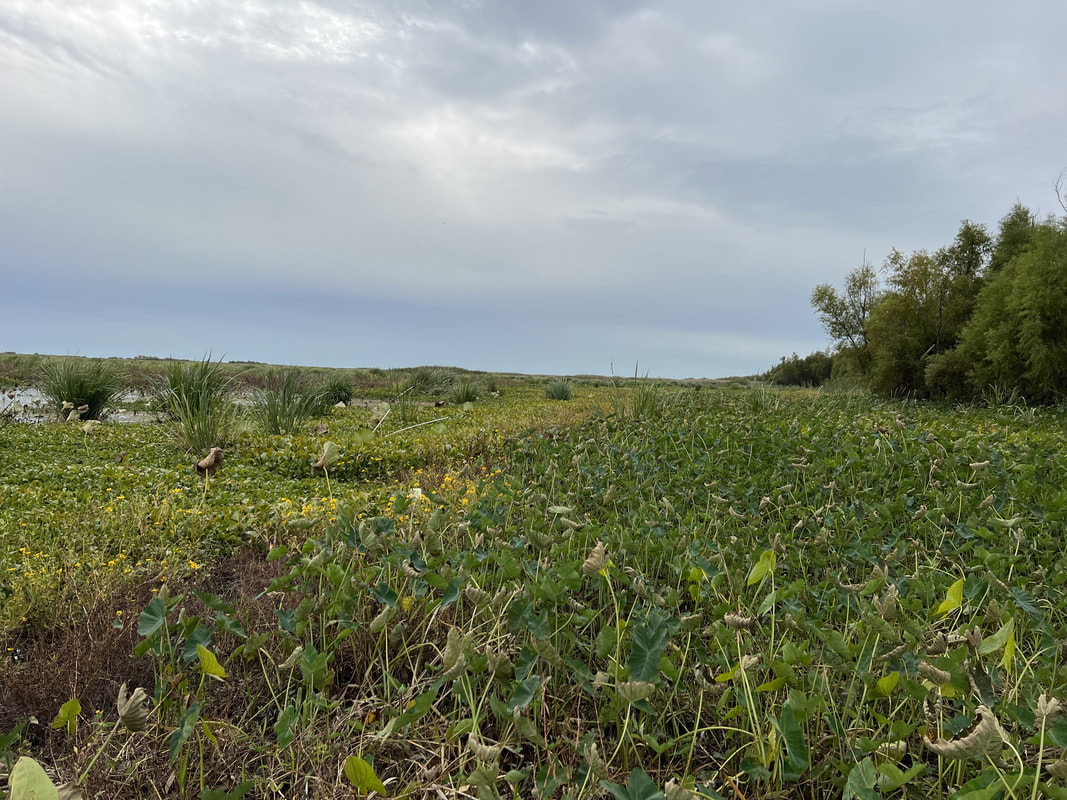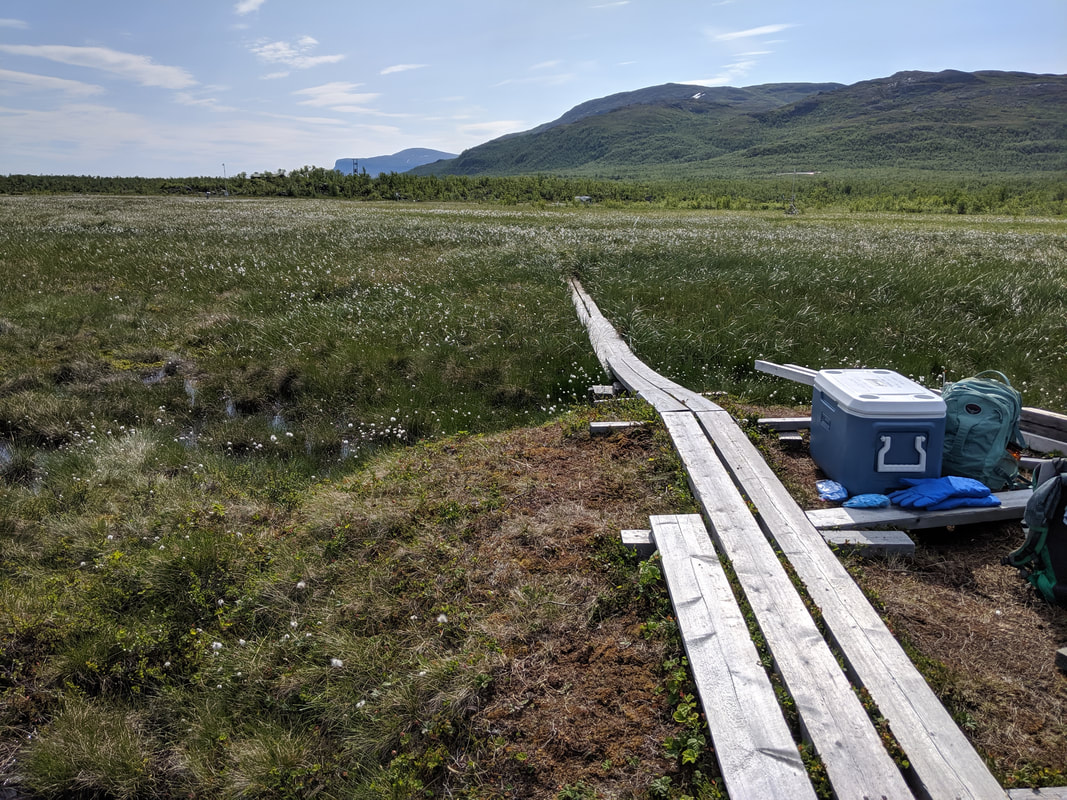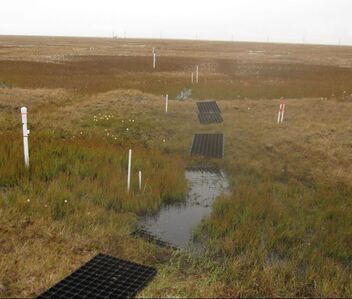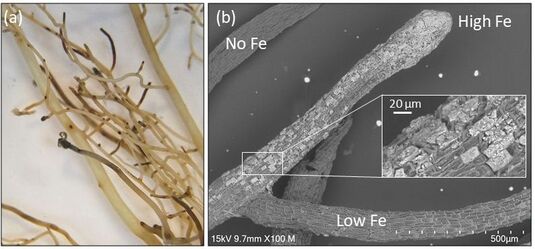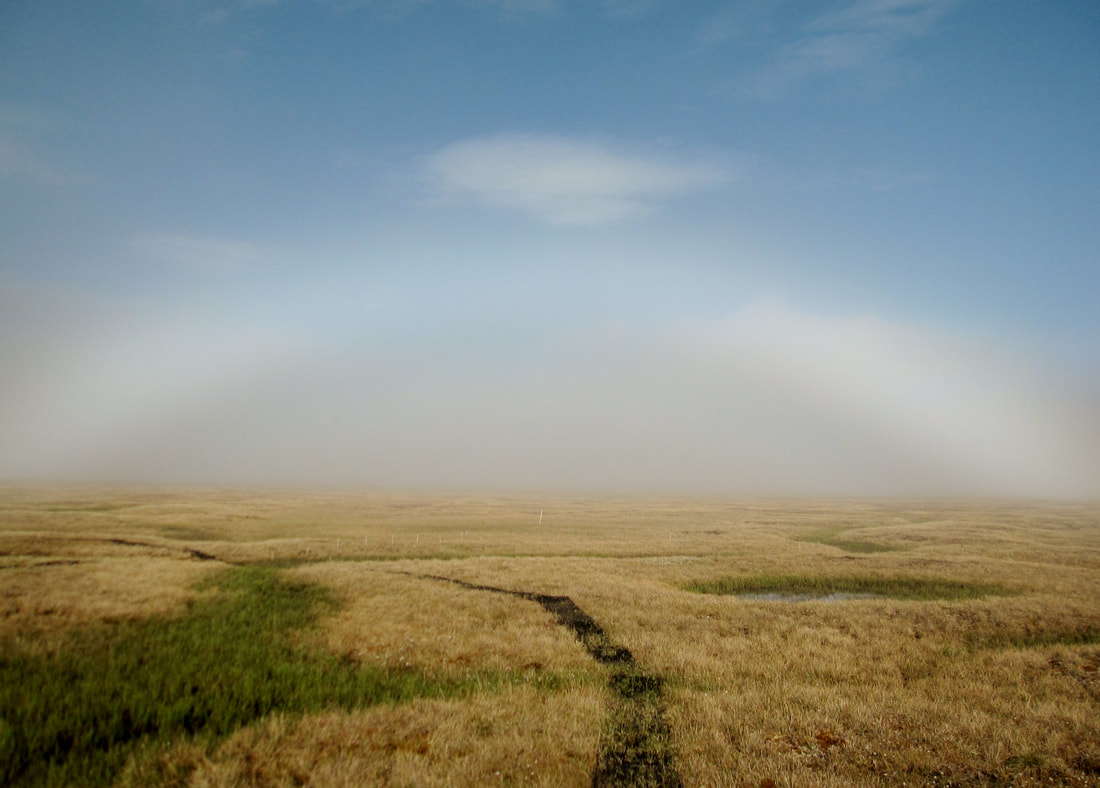Watershed Dynamics and Evolution (WaDE) Science Focus Area |
Next Generation Ecosystem Experiment (NGEE) - Arctic |
|
Advance predictive understanding of how watershed hydro-biogeochemistry operates under a range of hydrologic regimes and varies along stream networks that drain heterogeneous land covers.
|
Improving our predictive understanding of carbon (C)-rich Arctic system processes and feedbacks to climate
https://ngee-arctic.ornl.gov/ |
Biogeochemistry of redox-active species and their interactions with phosphorus on the Louisiana Gulf Coast
Coastal river deltas are home to more than 500 million people worldwide and provide trillions of dollars of economic and ecosystem services each year. However, deltas are experiencing substantial degradation and subsidence caused by human activities that have reduced sediment inputs and removed protective coastal ecosystems. Consequently, low-lying coastal areas are vulnerable to flooding and salinization associated with chronic sea level rise and episodic storm surges. Coastal degradation driven in part by urban flood control measures has resulted in substantial land loss along the Louisiana Gulf Coast. A 50-year effort is underway to preserve existing land through projects that include water and sediment diversions and marsh creation. Portions of the coast will shift from degrading to growing deltas that are expected to preserve habitats, support coastal industries, and buffer urban areas against hurricane damage and flooding. However, coastal systems that receive diverted freshwater may be impaired by excess nutrients from urban and agricultural runoff. To predict the future evolution of the Gulf Coast and its resilience to disturbance, biogeochemical processes that support ecosystem function must be evaluated across inundation and salinity gradients that represent current and future coastal ecosystems.
Learn more here!
This project is funded by DOE Early Career Research Program grant to Herndon
Project duration: 2023 - 2027
Learn more here!
This project is funded by DOE Early Career Research Program grant to Herndon
Project duration: 2023 - 2027
PhIr in the Arctic: Biological and geochemical controls on phosphorus in arctic tundra
The ability of terrestrial ecosystems to store carbon depends largely on nutrient availability, which affects both plant growth and decomposition rates. Phosphorus (P) is often a limiting nutrient, and P cycling in tundra ecosystems is widely assumed to occur primarily through biological pathways, in which biological P demand is met by enzymatic release of phosphate from organic molecules. However, this conceptual model does not account for iron (Fe) oxides, which may serve as nutrient traps that regulate phosphate solubility and serve as P sources or sinks under different redox conditions, even in organic soils. The processes controlling the quantity and bioavailability of oxide-bound P under different environmental conditions remain unclear, limiting our ability to predict how P availability might change with expected hydrological changes. Fluctuating redox conditions drive microbial transformation of Fe oxides and may also regulate P bioavailability. Thus, biological and geochemical controls over P dynamics may vary as a function of hydrology and redox regime across arctic landscapes. This project will use a sensor network to characterize redox and pH patterns in environments typical of low-arctic tundra and investigate biological and geochemical P competition across these gradients. The investigators will quantify competitive partitioning of P between abiotic (Fe oxides and other minerals) and biotic (microbial and plant) sinks. They will test the hypothesis that geochemical sorption and co-precipitation processes effectively compete with plant roots and microorganisms for phosphate in tundra soils. The study will provide the first assessment of the importance of geochemical versus biological controls on P bioavailability and how they might be altered by hydrological changes in these sensitive ecosystems.
This project is funded by NSF OPP Arctic Natural Sciences through Project #2006194. Related work on this topic was previously supported through NSF award EAR-1609027 to Herndon and Kinsman-Costello.
Principal Investigators: Elizabeth Herndon (U Tennessee/ORNL); Lauren Kinsman-Costello (Kent State), Michael Weintraub (U Toledo)
Project duration: 2019 - 2023
Relevant Publications
1. Patzner, M., Kainz, N., Lundin, E., Barczok, M., Smith, C., Herndon, E., Kinsman-Costello, L., Fischer, S., Straub, D., Kleindienst, S., Kappler, A., and Bryce, C.† (2022) Seasonal fluctuations in iron cycling in thawing permafrost peatlands. Environmental Science & Technology 56, 4620-4631. https://doi.org/10.1021/acs.est.1c06937
2. Herndon, E., Kinsman-Costello, L., Di Domenico, N., Duroe, K.*, Barczok, M., Smith, C. and Wullschleger, S.D. (2020) Iron and iron-bound phosphate accumulate in surface soils of ice-wedge polygons in arctic tundra. Environmental Science: Processes & Impacts. Online Access
3. Herndon E., Kinsman-Costello L., Duroe K., Mills J., Kane E., Sebestyen S., Thompson A., and Wullschleger S. (2019) Iron (oxyhydr)oxides serve as phosphate traps in tundra and boreal peat soils. Journal of Geophysical Research Biogeosciences. Online Access PDF
4. Herndon, E., Kinsman‐Costello, L. & Godsey, S., 2020. Biogeochemical Cycling of Redox‐Sensitive Elements in Permafrost‐ Affected Ecosystems. Biogeochemical Cycles: Ecological Drivers and Environmental Impact, pp.245-265. Online Access
5. Herndon, E.M. (2018) News and Views: Permafrost slowly exhales methane. Nature Climate Change 8, 273-274.
Online Access PDF
This project is funded by NSF OPP Arctic Natural Sciences through Project #2006194. Related work on this topic was previously supported through NSF award EAR-1609027 to Herndon and Kinsman-Costello.
Principal Investigators: Elizabeth Herndon (U Tennessee/ORNL); Lauren Kinsman-Costello (Kent State), Michael Weintraub (U Toledo)
Project duration: 2019 - 2023
Relevant Publications
1. Patzner, M., Kainz, N., Lundin, E., Barczok, M., Smith, C., Herndon, E., Kinsman-Costello, L., Fischer, S., Straub, D., Kleindienst, S., Kappler, A., and Bryce, C.† (2022) Seasonal fluctuations in iron cycling in thawing permafrost peatlands. Environmental Science & Technology 56, 4620-4631. https://doi.org/10.1021/acs.est.1c06937
2. Herndon, E., Kinsman-Costello, L., Di Domenico, N., Duroe, K.*, Barczok, M., Smith, C. and Wullschleger, S.D. (2020) Iron and iron-bound phosphate accumulate in surface soils of ice-wedge polygons in arctic tundra. Environmental Science: Processes & Impacts. Online Access
3. Herndon E., Kinsman-Costello L., Duroe K., Mills J., Kane E., Sebestyen S., Thompson A., and Wullschleger S. (2019) Iron (oxyhydr)oxides serve as phosphate traps in tundra and boreal peat soils. Journal of Geophysical Research Biogeosciences. Online Access PDF
4. Herndon, E., Kinsman‐Costello, L. & Godsey, S., 2020. Biogeochemical Cycling of Redox‐Sensitive Elements in Permafrost‐ Affected Ecosystems. Biogeochemical Cycles: Ecological Drivers and Environmental Impact, pp.245-265. Online Access
5. Herndon, E.M. (2018) News and Views: Permafrost slowly exhales methane. Nature Climate Change 8, 273-274.
Online Access PDF
Watershed Dynamics and Evolution SFA
Watersheds containing low- to mid-order streams supply critical freshwater resources for power generation, industry, recreation, agriculture, and human consumption. These provisioning and regulating services are vital to the global economy but are under increasing stress from climatic and environmental change. The long-term focus of the Watershed Dynamics and Evolution (WaDE) SFA is to advance predictive understanding of how dominant processes controlling watershed hydro-biogeochemical function operate under a range of hydrologic regimes and vary along stream networks that drain heterogeneous land covers.
Theme 1 (Dynamic Headwaters, led by Elizabeth Herndon and Alex Johs) focuses on how biogeochemical processes respond to wetting and drying in non-perennial streams and influence solute export into downstream reaches. This project is funded by DOE Environmental Systems Science Program to lead PI Eric Pierce (ORNL) Project duration: 2023 to 2026+ |
Next Generation Ecosystem Experiment - Arctic
The Next-Generation Ecosystem Experiments (NGEE Arctic) is a 10+ year project (2012—2022+) to improve our predictive understanding of carbon (C)-rich Arctic system processes and feedbacks to climate. This is achieved through experiments, observations, and synthesis of existing datasets that strategically inform model process representation and parameterization, and that enhance the knowledge base required for model initialization, calibration, and evaluation.
The Biogeochemistry task at ORNL seeks to improve predictive understanding of how organic matter is stored or transformed to produce greenhouse gases. We are especially interested in how interactions between Fe and C influence decomposition and storage, and how plant-soil interactions mediate biogeochemical processes.
This project is funded by DOE Environmental Systems Science program to lead PIs Stan Wullschleger and Colleen Iversen (ORNL).
Relevant Publications
- Sulman, B., Yuan, F., O’Meara, T., Gu, B., Herndon, E., Zheng, J., Thornton, P., and Graham, D. (2022) Simulated hydrological dynamics and coupled iron redox cycling impact methane production in an Arctic soil. Journal of Geophysical Research Biogeosciences 127(10), e2021JG006662. https://doi.org/10.1029/2021JG006662
